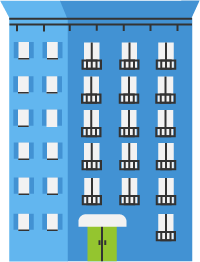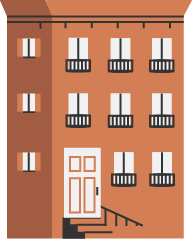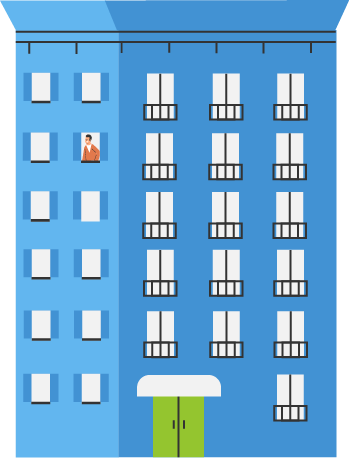Who insures what?
What to do
before a loss?
What to do
after a loss?
CO-OWNERS SYNDICATE
- Prepare and make available a
description of the private portions (DPP) - Assess the building reconstruction costs
to ensure there is sufficient insurance - Insure the building (private and
common portions) for the ordinary risks - Create a self-insurance fund
and replenish it when it’s used
-
In every case, have the damage to the common and private portions repaired
-
Submit a claim to its insurer
-
Apportion the cost of the damage among the co-owners if there is insufficient or no
insurance or it doesn’t submit a claim -
Use the self-insurance fund to pay the deductible or repair the damage

PRIVATE AND COMMON PORTIONS
Examples: foundation, roof, floors, walls, ceilings of the common spaces and units

OBLIGATION TO PRESERVE
The syndicate must take all necessary measures to preserve the entire building (private and common portions).
CO-OWNER

IMPROVEMENTS
Made by the co-owner
- Contribute to the syndicate’s self-insurance fund
-
Obtain civil liability insurance ($1M or $2M, depending on the size of the co-ownership property)
-
Purchase coverage for the risks the co-ownership property is exposed to
-
Insure any improvements (what is not included in the DPP)
- Should the syndicate request a reimbursement, the co-owner can submit a claim to their civil liability insurer.
-
Cover the cost of the damage apportioned by the syndicate (if insufficient or no insurance). See loss assessment coverage
-
Have the improvements repaired

COLLABORATE WITH THE SYNDICATE
For the repair of the damaged portions
DESCRIPTION OF THE PRIVATE PORTIONS (DPP)
Describes the immovable portion of a reference condo unit. Anything not in the DPP is an improvement.
LOSS ASSESSMENT COVERAGE
Applies if the risk is covered by the co-owner’s policy.




















